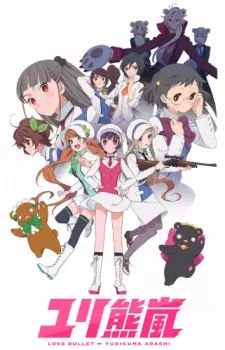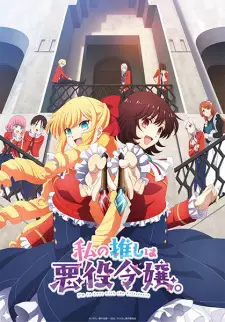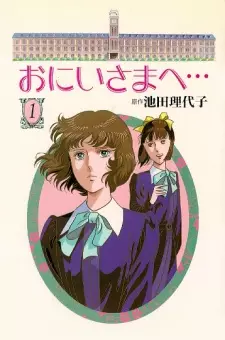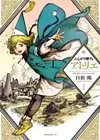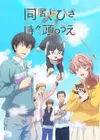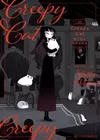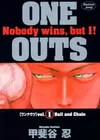Yuri and yuri-adjacents
AnimeSpoiler
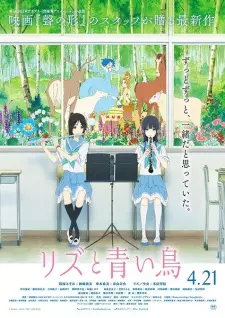
Movie, 2018,
1 ep
Me:-
Author:10
Liz to Aoi Tori is a careful and selective adaptation of the 9th light novel in the Hibike! Euphonium series; Sound! Euphonium Kitauji High School Concert Band, Second Turbulent Movement Part 2. An hour and thirty minutes of film is pulled from, generously, 40 pages worth of original material, mostly dialogue, in the Second Turbulent Movement Part 2.
The film is hyper-focused on the relationship between a flutist Kasaki Nozomi, and a oboist Yoroizuka Mizore. The relationship is perceptibly untenable; Mizore holds some deeply unrequited feelings for Nozomi, which she cannot bring herself to verbalize. Nozomi consciously keeps this obvious issue at arms-length, preferring a light and flighty sort of friendship. The friendship is founded on Mizore's unquestioning commitment to Nozomi, but the tension is in what Nozomi thinks of Mizore. It is about the struggle to define what they mean to each other while not cleaving apart an already fragile relationship.
The stylistic decisions are bold and fully committed to exploring the relationship in detail, while being totally insular and silent on the explicit details of the matter at hand. The soundtrack, if it can be called one, is mostly rhythmic noises, footsteps, chimes, birds, chairs moving. When the soundtrack does make an appearance, it is startling to hear a character's feelings so explicitly in turmoil after such gentle disharmony. The music for all its indiosyncracy, is illuminating. The animation and the art style are changed from the Hibike! Euphonium series as well, thin lines, slow but constant movements, and commitment to a slow, repetitious reality.
Adaptational differences are extensive. Whereas the original novel is told from Oumae Kumiko's (the traditional protagonist) perspective, the film sidelines the vast majority of the regular cast. Only Nakagawa Natsuki carries over in a similar role, and only as a supporting character at that. Pushing the traditional protagonist out of the limelight, necessitates a vast change in story circumstances, but at every turn Liz is better for it. The film's portrayal of Mizore and Nozomi's faltering relationship is bereft of distractions. Even the major supporting characters, Natsuki and Yuko, have their roles substantially reduced in Liz, compared to the novel. These choices deliberately place agency in the hands of Nozomi and Mizore, empowering characters that felt more like subjects for protagonist, and therefore audience, voyeurism in the second season, and characters absent their own will in the light novel.
That said, Liz can feel intensely voyeuristic. Nozomi's slightest movements are accorded immense detail and weight; opening a locker, taking off a shoe, opening a window, even blinking is treated as a moment worth savoring. Whose lens the camera privileges shifts throughout the film, but Mizore's gaze is the most detail oriented. It feels like the camera shares her unrequited feelings, and her movements, tracing her eye line, whether it the rapid pan of first spotting Nozomi as she enters the school gate, or the slow crawl up her back as she welcomes a sunny day with a stretch exposing her back. Mizore can hold back her words, but she can't look away, not for an instant.
Nozomi's frame is less obviously constrained. The camera is more willing to sit still for a moment, lock down, and let Nozomi move. Her scenes rarely jump into her eyes, saving that for the colorful moments of her memory. That said, Nozomi's gaze is well-defined. Rather than savoring her very existence, Nozomi is keeping watch over Mizore. The watchful eye of something like an older sister, cautious, but also striving to be the role-model, to be worth following. Nozomi's frame is outward, shots featuring Nozomi in the school are rarely solitary, always she has someone to talk to, someone to impress. She treats those around her as a camera to act at. Unlike Mizore, Nozomi has a shifting feeling towards their relationship. More and more the camera catches Nozomi briefly out of step. Nozomi's gaze turns from protective, to confused, to jealous, each more disastrous than the last for her careful posturing. More and more Nozomi realizes that there is something shifting in their relationship.
Besides saying that this is a piece of media that I love, there is something else to it. Its paucity of words, and embrace of indirect representations of emotion, whether that be a musical beat, the shifting lens, or the effort to drive the mundane headlong into myth; there is something special here. The work feels so odd. Imagine; crafting something from a fable, a fable with a story as clear as crystal, the hyper-legibility of a myth, so strong in fact that you can put it to a traditional classical music piece with all its crescendos and high emotions, and then remove that clarity. Make the work so detail-oriented, that you lose sight of the overall picture. It is the inverse of legible, but it feels like it begs to be understood beyond all else. The film’s commitment to every subtlety, the full cacophony of its every tiny quiet element, is its own clarity.
The film is beyond perfect, and worth your time.
The film is hyper-focused on the relationship between a flutist Kasaki Nozomi, and a oboist Yoroizuka Mizore. The relationship is perceptibly untenable; Mizore holds some deeply unrequited feelings for Nozomi, which she cannot bring herself to verbalize. Nozomi consciously keeps this obvious issue at arms-length, preferring a light and flighty sort of friendship. The friendship is founded on Mizore's unquestioning commitment to Nozomi, but the tension is in what Nozomi thinks of Mizore. It is about the struggle to define what they mean to each other while not cleaving apart an already fragile relationship.
The stylistic decisions are bold and fully committed to exploring the relationship in detail, while being totally insular and silent on the explicit details of the matter at hand. The soundtrack, if it can be called one, is mostly rhythmic noises, footsteps, chimes, birds, chairs moving. When the soundtrack does make an appearance, it is startling to hear a character's feelings so explicitly in turmoil after such gentle disharmony. The music for all its indiosyncracy, is illuminating. The animation and the art style are changed from the Hibike! Euphonium series as well, thin lines, slow but constant movements, and commitment to a slow, repetitious reality.
Adaptational differences are extensive. Whereas the original novel is told from Oumae Kumiko's (the traditional protagonist) perspective, the film sidelines the vast majority of the regular cast. Only Nakagawa Natsuki carries over in a similar role, and only as a supporting character at that. Pushing the traditional protagonist out of the limelight, necessitates a vast change in story circumstances, but at every turn Liz is better for it. The film's portrayal of Mizore and Nozomi's faltering relationship is bereft of distractions. Even the major supporting characters, Natsuki and Yuko, have their roles substantially reduced in Liz, compared to the novel. These choices deliberately place agency in the hands of Nozomi and Mizore, empowering characters that felt more like subjects for protagonist, and therefore audience, voyeurism in the second season, and characters absent their own will in the light novel.
That said, Liz can feel intensely voyeuristic. Nozomi's slightest movements are accorded immense detail and weight; opening a locker, taking off a shoe, opening a window, even blinking is treated as a moment worth savoring. Whose lens the camera privileges shifts throughout the film, but Mizore's gaze is the most detail oriented. It feels like the camera shares her unrequited feelings, and her movements, tracing her eye line, whether it the rapid pan of first spotting Nozomi as she enters the school gate, or the slow crawl up her back as she welcomes a sunny day with a stretch exposing her back. Mizore can hold back her words, but she can't look away, not for an instant.
Nozomi's frame is less obviously constrained. The camera is more willing to sit still for a moment, lock down, and let Nozomi move. Her scenes rarely jump into her eyes, saving that for the colorful moments of her memory. That said, Nozomi's gaze is well-defined. Rather than savoring her very existence, Nozomi is keeping watch over Mizore. The watchful eye of something like an older sister, cautious, but also striving to be the role-model, to be worth following. Nozomi's frame is outward, shots featuring Nozomi in the school are rarely solitary, always she has someone to talk to, someone to impress. She treats those around her as a camera to act at. Unlike Mizore, Nozomi has a shifting feeling towards their relationship. More and more the camera catches Nozomi briefly out of step. Nozomi's gaze turns from protective, to confused, to jealous, each more disastrous than the last for her careful posturing. More and more Nozomi realizes that there is something shifting in their relationship.
Besides saying that this is a piece of media that I love, there is something else to it. Its paucity of words, and embrace of indirect representations of emotion, whether that be a musical beat, the shifting lens, or the effort to drive the mundane headlong into myth; there is something special here. The work feels so odd. Imagine; crafting something from a fable, a fable with a story as clear as crystal, the hyper-legibility of a myth, so strong in fact that you can put it to a traditional classical music piece with all its crescendos and high emotions, and then remove that clarity. Make the work so detail-oriented, that you lose sight of the overall picture. It is the inverse of legible, but it feels like it begs to be understood beyond all else. The film’s commitment to every subtlety, the full cacophony of its every tiny quiet element, is its own clarity.
The film is beyond perfect, and worth your time.

OVA, 2018,
1 ep
Me:-
Author:9
Kase-san and the Morning Glories is unique; atypically stereotypical. Take the antics of a traditional CGDCT, the post-processing of a KyoAni work, and a truly rote Hollywood ending, and you'll get something like Kase-san. So what makes it special? Make the yuri explicit. Not like 18+, but make it clear that our characters are in love. Kase-san has the greatest opening minute-thirty in the entirety of anime, hands-down. A musical interlude that runs directly through all the moments that the typical yuri get bogged-down in, the "typical getting to know you chit-chat," and then its done, and somehow the audience is left unsure what happens next. Anime as a medium doesn't usually follow through with the relationship, instead the run-up to it is far more important. Its what makes Tamako Love Story painful, it is so much effort spent on something that's been done a thousand times before. Kase-san instead is proud to make a workable narrative out of trying to navigate the relationship itself; how open can they be about the relationship, how far are two high schoolers taking it, what are the boundaries, how to keep it going? Nowhere is the relationship treated like a prize, it is a job to hold it all together. This not novel, but it is abnormal. To see a relationship treated with this level of production value, not necessarily realistically but certainly not dramatically, and with such care, never mind to be a yuri on top of all of it, that is special. Kase-san and the Morning Glories is worth your time, if Kumirei let you down, this will pick you right back up.
The first half of this is beyond perfect, and it does get dragged down by a weaker second half, but it is pulled down from being the best outright, to merely being one of the greatest pieces in the genre. Without a doubt, the greatest shame is that this OVA, and a short music video are all we've gotten from the franchise thus far.
The first half of this is beyond perfect, and it does get dragged down by a weaker second half, but it is pulled down from being the best outright, to merely being one of the greatest pieces in the genre. Without a doubt, the greatest shame is that this OVA, and a short music video are all we've gotten from the franchise thus far.
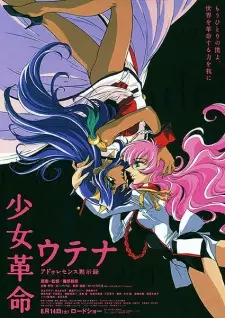
Movie, 1999,
1 ep
Me:-
Author:9
This is one of the most beautiful movies in existence, in a genre drowning in beauty. Where many other choices on this list are beautiful with thin lines, sparkly lighting, and carefully manufactured implication, Revolutionary Girl Utena: Adolescence Apocalypse (more commonly, Adolescence of Utena), is stark. The world feels wrong, the skyscrapers are non-sensical, the geometry fiercely non-euclidean, and manufactured in a way that makes moments of color and wonder overwhelm the industrial nightmare surrounding them. Adolescence is firmly yuri, and yet dystopian. Rather than the carefree manifestations of youth, Adolescence presents Anthy and Utena's relationship as a stand against an unjust system, each carrying the burdens of their pasts' on their back. Warning for a whole mess of nastiness, including the very bad R, gaslighting, sexism, and sexual assault. All of that is background to the revolutionary stand of Anthy and Utena. The combat in Adolescence is just as deft, each blow is weighty, characters brawl just as much as they duel, with all the fury that implies. Dialogue is also top-tier, the moments when two characters are forced to sit still for just a second in this clockwork world are truly meaningful. This is as close to perfect as a film can be without hitting it.
I love Adolescence, but there is a major caveat. I think you should watch the original show first. I am almost certain the film loses its punch without knowing how much of a departure Adolescence is from the original. There is almost certainly a watch guide for getting through it without all 37 episodes, but I would recommend going through the full 37. It is worth it, even if the constant duels and repeated animations, are painful to sit through sometimes. The show also has a killer ending theme for the first arc.
If I could recommend it without forcing an extra 18 and a half hours on you, the battle for top spot between Liz and Adolescence would be the sort of criticism that would bring me to my writing knees. As it stands, this is not quite a stand-alone work.
Oh, also, the ending is wild, but it makes perfectly, bluntly logical sense if you think about it thematically. No problems with it.
I love Adolescence, but there is a major caveat. I think you should watch the original show first. I am almost certain the film loses its punch without knowing how much of a departure Adolescence is from the original. There is almost certainly a watch guide for getting through it without all 37 episodes, but I would recommend going through the full 37. It is worth it, even if the constant duels and repeated animations, are painful to sit through sometimes. The show also has a killer ending theme for the first arc.
If I could recommend it without forcing an extra 18 and a half hours on you, the battle for top spot between Liz and Adolescence would be the sort of criticism that would bring me to my writing knees. As it stands, this is not quite a stand-alone work.
Oh, also, the ending is wild, but it makes perfectly, bluntly logical sense if you think about it thematically. No problems with it.
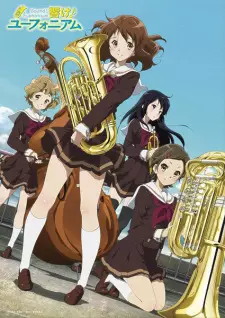
TV, 2015,
13 eps
Me:-
Author:9
Hibike! Euphonium's original light novel was not written as a yuri, rather as a testbed for the emotional lives of high school students putting themselves under pressure, and how that manifests. Kumiko is depicted in what one might term an every(wo)man role. Openly kind enough, privately disinterested, disillusioned, and distant. I am know for my alliterations. The TV series is still grounded in that light novel; but the choices in its interpretation strongly push Kumiko towards being her own character. Perhaps the best example of this is 'Festival Triangle,' a true ensemble moment, with all characters given screen time, something to do, and something worth saying, whereas the original light novel is bound to Kumiko's perspective all the way through. The show also makes other adaptational changes, like making it a yuri. That's right, it is yuri. I don't know about you, but when I take a cute girl out hiking at night to a scenic overlook to play her music and run a finger down her face, while telling her "I want to peel that good girl skin off of you," it usually means nothing. Note: This does happen in the light novel, but this moment is an aberration in Reina's character, an outburst of emotion that the author has been saving, not the rule. The show instead frames Kumiko and Reina's relationship as something that will blossom. The pair share too many long gazes, the camera lingers on their hands intertwined, the lighting is always the glow of something romantic when they're together; there is too much here for a fandom to conjure it from thin air. It's not my fault that season 2 dropped the ball, and perhaps the best argument I have is that season 2 feels palpably different, not even arguably yuri, and the people agree. Season 1 of Hibike! is one of the greatest unrealized yuri shows in the post Haruhi-era, and it is fabulous. Dream of what could have been, and more importantly, remember what season 1 of Hibike! is.
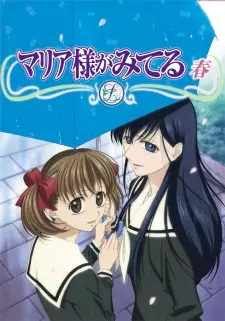
TV, 2004,
13 eps
Me:-
Author:8
A true rarity; a sequel that surpasses the original in every way. Maria-sama season 1 made a template, and Haru manifested as something special. Supposedly in production Season 1 and Haru were meant to be a single series, and it feels that way. The same staff, the same characters, and most importantly, a gradually shifting tone. Marimite: Haru actually manages something that no other anime has ever managed to for me; selling me on a cast change. In my entire time watching a great variety of series, there are two things that have defined my tastes; no time-skips, and no cast changes. I never feel like a story will carry the same weight after such a profound change from what originally sold me. Skips and changes feel like a total rug-pull with no benefits, every time. Haru's first episodes cover the departure of the oldest roses, and with the tone and respect befitting EACH of the characters. The departure is not all melodrama, instead it is tender, it is funny, and it is bittersweet when the character's call for it. I think this season does lose something from the absence of the original cast's chemistry, Haru's second half is weaker for it, but never before have I felt like a story's characters got a worthy send-off. That cast change is also a necessity; the series' tone needed to shift or risk becoming stale. The new characters are weaker, but they do push the show to be something different, less chaste, less cold, but still undeniably Marimite. That makes it something truly rare in an anime, especially in a yuri; actual growth.
Also Sato Sei is in this. She seems nice.
Also Sato Sei is in this. She seems nice.
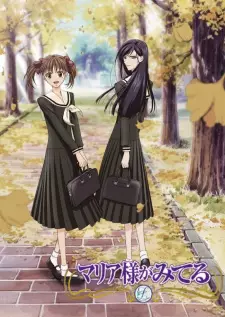
TV, 2004,
13 eps
Me:-
Author:7
A classic worth watching. Maria-sama set the stage for the slow burn, chaste yuri that a discerning eye sees the influence of in Liz. Much is left to implication, and it is certainly tame for those seeking representation. However, this is a classic for a reason, and the environment, character design, and tone are a source of both inspiration and criticism in later works. Maria-sama is (somewhat) quietly the standard that slow burn yuri is judged against for better or worse. Whether you vote yay or nay, Marimite paved the way. (Rhyming means I cared about writing this)
Sato Sei is in this. She seems nice. Somewhat unfortunately she falls into the tragic lesbian backstory thing. It is well done at least, but she is saddled with perpetuating a stereotypical role.
Sato Sei is in this. She seems nice. Somewhat unfortunately she falls into the tragic lesbian backstory thing. It is well done at least, but she is saddled with perpetuating a stereotypical role.
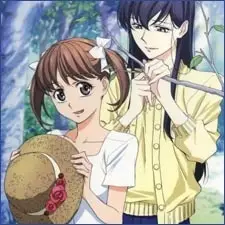
Special, 2004,
7 eps
Me:-
Author:7
The Marimite specials are a treat to watch after completing the series. Take the restraint and cautious dialogue of the series, with the characters you know as carefully toeing the line of daintiness, and let them chew the scenery. More explicitly yuri, but openly critical of character portrayals, audience gaze, and even shot composition. A self-contained third wall-breaking critique of the whole genre.
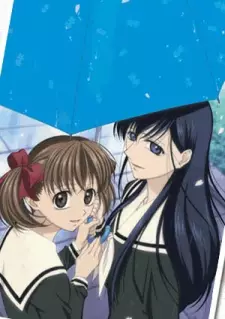
Special, 2004,
6 eps
Me:-
Author:7
Comedic specials set around the plot of Marimite: Haru. More explicitly yuri, less critical, and still pretty funny to hear the voice actors struggle to portray a character breaking character.
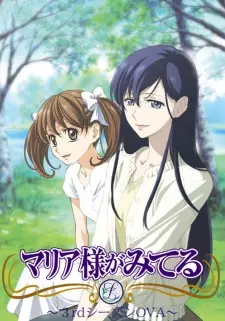
OVA, 2006,
5 eps
Me:-
Author:7
The 3rd is the 3rd part. How fascinating. This season is made up entirely of hour-plus long OVAs. I think it is the weakest of the three good season of Marimite, but that said it is strong enough to be worth watching. Some of the episodes are quite a drag, but when this show hits its stride you are in for some of the best stories the series has to offer. Just stay away from season 4.
Sato Sei is in this. She seems nice.
Sato Sei is in this. She seems nice.
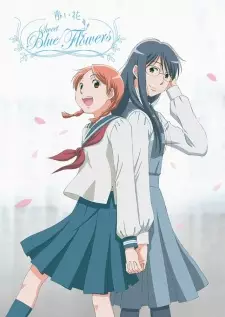
TV, 2009,
11 eps
Me:-
Author:7
Quiet, slow, and bittersweet. Uniquely enamored of both embracing its romantic elements, and treating them as easily soluble ties like real youthful relationships. I am a big fan of a slow burn, but it feels like it misses the payoff. Even with a weak conclusion, this is well worth watching.
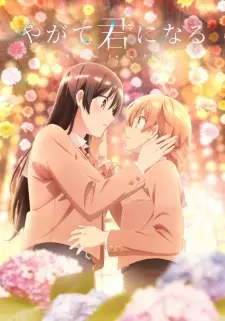
TV, 2018,
13 eps
Me:-
Author:6
Alright. Loves messing with light bloom and color palette to match emotional scenes. Theoretically features a one-way relationship committed lesbian and an aromantic individual, but over the course of the series the relationship "blooms" into something more mutual. Overly saccharine for my tastes, but beautiful.

ONA, 2007,
1 ep
Me:-
Author:6
Oddly sweet for being about incestuous lesbian sisters. If you can get over that, this is alright, and there is plenty more available in the series. This ONA has the best animation quality, while maintaining the sick to sweet ratio at a proper level.
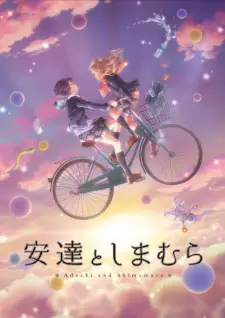
TV, 2020,
12 eps
Me:-
Author:5
A strange thing, unrequited yet explicitly romantic. I dislike its leering gaze, and the story is weak, but Adachi's internal monlogue is worth watching the series for. Critically, Adachi to Shimamura is committed to animating internal struggles as well, the best episodes are driven by character's inner monologues.
Lots of cliches but quite beautiful and worth a watch.
Lots of cliches but quite beautiful and worth a watch.
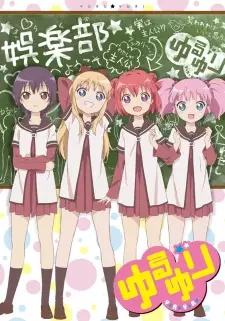
TV, 2011,
12 eps
Me:-
Author:5
A progenitor of modern CGDCT comedy. Classic, but not worth reverence. The thin witty comedy is a style within the yuri framework I'm not a fan of. Just enough scenes to imply yuri, just enough chaff to pretend its not. Also, wait; these are elementary school students?!

TV, 2013,
12 eps
Me:-
Author:5
A later vision of modern CGDCT comedy. I find this one much funnier than Yuru Yuri, but they are functionally interchangeable. Less explicit yuri than Yuru Yuri, but an endless river of implications.
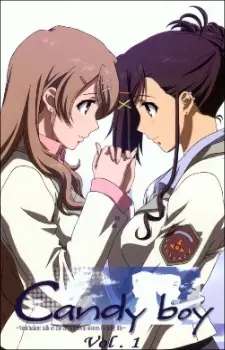
ONA, 2008,
7 eps
Me:-
Author:5
The full series in the Candy Boy franchise. Still about incestuous lesbian sisters, so fair warning. The show is oddly sweet about it, it never feels foul, despite being a core conceit of the show. Animation and writing quality take a dive compared to the original Side Story.
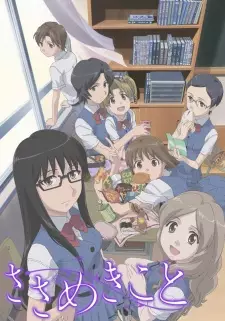
TV, 2009,
13 eps
Me:-
Author:4
I do not enjoy bashing things I don't like, so suffice it to say that I find its commitment to comedy counter-intuitive to telling a sweet story. So why is it here?
Sasameki Koto's OP is one of the best pieces of music to emerge from yuri, and cannot be ignored. Let the rest of the show fade from your memory, but keep Kanashiihodo Aoku in your heart.
Sasameki Koto's OP is one of the best pieces of music to emerge from yuri, and cannot be ignored. Let the rest of the show fade from your memory, but keep Kanashiihodo Aoku in your heart.
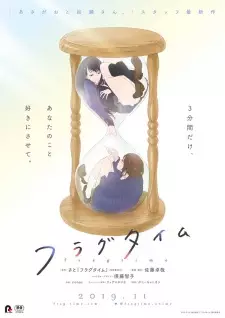
Movie, 2019,
1 ep
Me:-
Author:3
This is here as a warning. Do not watch this. Take everything good about Asagao to Kase-san and do the opposite. It has quite an art style though. Characters are generally unlikable, and are crassly sexualized, which could be what you're looking for in terms of representation, but it is certainly not for me.
